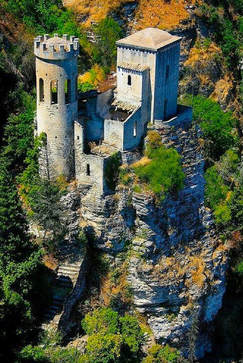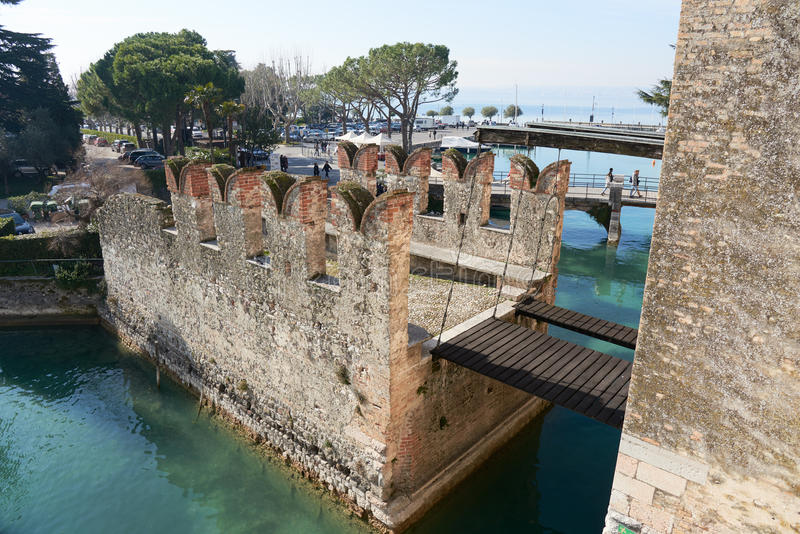 Florence crowds Florence crowds In 2017, over 50 million tourists stayed in Italian hotels--and ONLY during June, July and August, the supposed "high season". But in the last decade, the "high season" has been expanding to early spring and as late as October, and most visitors to Italy don't stay in hotels... How many more visitors stayed in rental apartments or with friends or relatives? How many camped or stayed in hostels or local B&Bs? Keep in mind, the population of Italy is only around 60 million (a decent number for such a small country), but some estimates put the number of actual tourists from all over the world visiting Italy at over 420 million in 2017 alone. Just imagine if the U.S. matched or even surpassed its own 320 million population with half a billion tourists a year?! The actual current number of tourists visiting the U.S. annually is a mere 80 million. It seems Italy is being over-promoted, overbooked and over-run by tourists. As an example, just look at what happens to Venice during the summer months when as many as 6 cruise ships each day dump (according to recent numbers) over 32,000 people onto the fragile jewels of its sinking islands. Over 600 cruise ships a year make daily stops in Venice! The influx has become so bad the city is being gentrified, with mom and pop shops turning into tacky gift shops selling things made in China, and with local residents moving out when they realize their homes are worth more as holiday rentals. Is it time to give Italy a bit of a rest from the wear and tear on its tourist hotspots... Venice, Florence, Pisa, Rome? Are these "must see" destinations turning into Italian Euro-Disney spots, lacking authenticity and losing their cultural heritage? We propose that when Italy opens up again as this pandemic dies down, Americans should visit a small town in Italy where the real Italian lifestyle can be experienced, instead of putting up with indignities of enormous, shoulder-to-shoulder crowds, pushing, shoving and tight schedules of the "must see" locations. If you are traveling with kids, this should be an important consideration. Children can have a much more enjoyable time if you slow it down and toss out the schedule. There are tons of things to do with kids all across Italy... water parks, go-karts, dinosaurs, science museums, beaches, cycling, hiking and more. How about Monte Isola, a town on Lake Iseo in Lombardy? Or visit the mountain village of Castelluccio in Umbria for a taste of small town, mountain life. Instead of Florence, visit Pienza, one of the most beautiful Renaissance villages in Tuscany. And instead of paying high fees to have a spa day, go where the locals go for free, to Bagno San Fillipo in southern Tuscany and bath in the hot, natural sulfur springs under huge mineral waterfalls frozen in time. And the Cilento is much less crowded (aside from August when Italians flock to its beaches for their Ferrragosto holiday) that the Amalfi Coast and has lime after mile of real sand beaches. And don't forget Puglia, especially the tip of the boot around the port town of Brindisi. Puglia isn't like any other part of Italy and nearly every town has something unique to offer. For amazing beaches, take a plane or ferry over to Sardinia. Its natural wonders are unspoiled, with the sea as clear as tap water. So reconsider when booking your next visit to Italy. Throw away the must-see list and visit the real Italy. Slow down, relax and spend time in one location and area at a time. Find out what days the local market is open. Rent a house or apartment and do your own cooking with amazing, fresh ingredients. Meet the locals. Learn the local dialect... even if just a few words. Keep in mind that Italy isn't one thing... it's not just Rome, Florence, Pisa and Venice. There are 20 independent regions in Italy, each with its own language, cuisine, customs and culture. You can literally throw a dart at a map of Italy and then plan a trip to the region the dart lands on. Trust me. Italy is a lot more than standing on line for hours just to be rushed through the Sistine Chapel in five minutes, with throngs of tour groups shoving you from behind.
Learn to live the Italian lifestyle while you are in Italy, and I guarantee you'll have learned how to life a bit of that same lifestyle when you're back home. Ciao e buon viaggio. --Jerry Finzi  Castel del Monte, located in the municipality of Andria in Puglia, rises up from a rocky hill dominating the surrounding countryside of the Murgia region near the Adriatic Sea. A unique piece of medieval architecture, it was completed in 1240 AD. The castle’s location, its perfect octagonal shape, as well as the mathematical and astronomical precision of its layout all reflect the education and cultural vision of its founder, Holy Roman Emperor, Frederick II, although the actual architect and builder is still unknown. As a leader of modern humanism, the Germanic Emperor brought scholars together in his court from throughout the Mediterranean, combining Eastern and Western traditions. The castle’s unique design, an octagonal plan with octagonal towers at each angle, represents a search for perfection. Interior features reflect Eastern influences, such as the innovative hydraulic installation used by Frederick II which used rain water for the toilets and bathrooms of the fortress. Although he had been the founder of the castle, it is believed that Frederick II never spent a night here. It is believed the castle was initially conceived as a hunting lodge. However, several sources suggest that in 1249 the castle was used as a theater when the wedding of Violante, Frederick’s daughter, took place. In 1256, it was used as a prison for rebels by Frederick II’s son, King Manfredo of Sicily.
The original intended use of the Castel del Monte is unclear. The shape doesn't make it look like a castle but more of a defensive fortress. But it lacks the elements that would be necessary for proper defense: it has no ditches or moat, no drawbridge, no basement..only very large, marble-covered rooms, worthy of a lavish royal residence. During the Middle Ages, all of the rooms were decorated with precious polychrome marble, mosaics, paintings and tapestries, but unfortunately over time Castel del Monte was robbed of its treasures by looters and vandals. The castle was built using three types of material: limestone, white marble and coral breccia. The site is of outstanding universal value in its formal perfection and its harmonious blending of cultural elements from northern Europe, the Muslim world and classical antiquity. Castel del Monte is a unique masterpiece of medieval architecture, reflecting the humanist ideas of its founder, Frederick II of Hohenstaufen. Castel del Monte is also a designated UNESCO world heritage site and is considered to be one of the best castles in Puglia. Perched on top of a hill and see for miles around at an altitude of 540 meters, the castle can be reached by driving on the SS170 motorway. Visiting Castel del Monte April 1 to September 30 from 10:15 to 19:45 - The ticket office closes at 18.00 hrs. October 1 to March 28 from 9:00 to 18:30 - The ticket office closes at 19.15 hrs. The full-price ticket costs 7.00 €, reduced rate of € 3.50 for age group 18-25. Free entry for under-18s and over-65s. Free entry on the first Sunday of the month. Free if you show your handicapped placard or card.  Nearly 2500 feet above the boundary of the Tyrrhenian and Mediterranean Seas is the ancient town of Erice with its two castles, Torretta Pepoli and Castello di Venere (Castle of Venus). The mountain-top town has amazing views overlooking the city of Trapani, at the northern tip of the western coast of Sicily. A cable car joins the upper and lower parts of the beautiful town and with belvedere views from every corner of the town, it's well worth the trip. In the northeastern portion of the city there are the remains of ancient Bronze Age Elymian walls dating back to several thousand years before the time of Christ. The name Erice comes from the Greek hero, Eryx, even though the town was originally colonized by the Phoenicians. It was then ruled by the Greeks, the Carthaginians, and then the Arabs (the Aghlebids), until the Normans conquered it in 1167 and gave it the name Monte San Giuliano, a name that stuck until until 1934.  Pepoli Castle dates from Saracen times, and the Castello di Venere dates from the Norman period, built on top of the ancient Temple of Venus. According to legend, the temple was built by the Trojan hero (Venus' son), Aeneas to honor his goddess mother. Legend claims that an important cult used the temple for its sacrifices, and that the animals chosen for sacrifice would voluntarily walk up to the altar to be killed. Today, there are no sacrifices, so you can safely take the cable car (funivia)--newly rebuilt after a forest fire--from the outskirts of Trapani to the town of Erice. --GVI  Castello Scaligero in the commune of Sirmione sits on a thin peninsula jutting out into the southern end of Lake Garda. Essentially, the ramparts of the castle function as a small fortified harbor for what was the Scaligera fleet. The castle has a de facto moat (the surrounding lake) and even a drawbridge through which visitors enter. There are 146 steps which take you up to ramparts of the walls which look down upon the little harbor. There is a small walkway around which bowmen would be stationed to ward off any intruders from the lake in addition to defensive towers. Castello Scaligero is perhaps the best preserved castle from medieval times in Italy, constructed in the middle of the 13th century on top of the remains of an ancient Roman fortress. Taking over a century to build, two courtyards and an other fortifications were also added. In 1405 the Republic of Venice took control and strengthened the castle even further.  If you decide to visit, consider that in high season Lake Garda can get very busy. Still, there is so much to do in the surrounding area, even water parks and campgrounds if you're so inclined: Sirmione Historic Center - After visiting the Castello, take a stroll around the old town of Sirmione. There are shops, restaurants, gelaterias, pizzerias and beautiful architecture. Be sure to take in a passaggiata (stroll) at dusk to Piazza Callas and its pier that juts out into the lake. Archaeological site of Grotte di Catullo - Ruins of a sizable Roman villa on a peninsula with an olive grove & a nearby archeological museum. Can get crowded in high season but worth a visit. Camping Village San Francisco Mantua & Peschiera del Garda - Mantua is a wonder town surrounded by manmade lakes which create a huge moat. Peschiera del Garda is a "water" town--surrounded on all sides by the River Mincio which connects to the lake. Lake Garda Cruises GVI Travel Tip: Best visited in the off season.
|
Categories
All
Archives
May 2023
|





























 RSS Feed
RSS Feed
